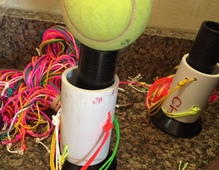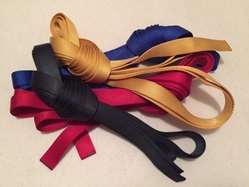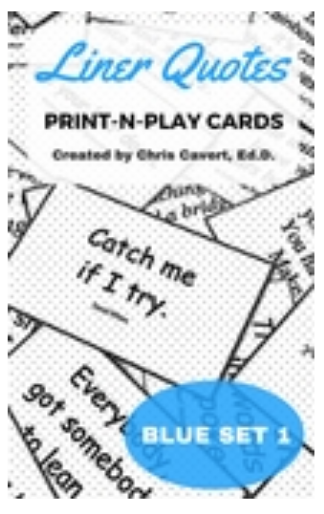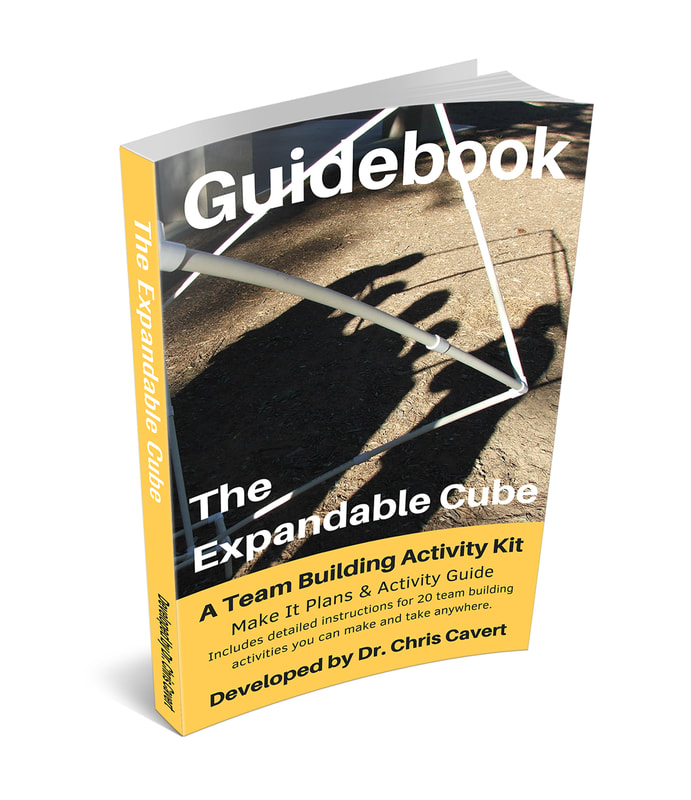Years ago (even before Claytionary was a real board game at one time), Karl Rohnke wrote up the activity "Claydoughnary or Claytionary" in Quicksilver (1995). Karl called "this game a hands-on winner, courtesy of Ann Driscoll." Karl's/Ann's version was played with small teams as well (the way Jennifer describes). When the sculptor for each team received their word they ran back to their group to model the word with Play-Doh. The first team to guess the word was the winner (indicated by shouts of victory). Then another sculptor went up for the next word. All team members have two turns to sculpt (assuming each team has the same amount of players) after which the team with the highest score wins.
Below is the main write up (rejuvenated by) Jennifer. I helped with a few edits and additions to round it out for additional fun. In the PDF document attached you will find the same directions, plus a chart with additional charades themes & words from Jennifer's collection AND the set of eight Beach Themed cards (as seen above) she shared with me (or I should say US!). I hope this inspiration moves you to play up this fun classic again. (AND you know, you don't need Play-Doh to play charades right?!).

(Directions developed by Jennifer Steinmetz & Chris Cavert)
Number of players: Any group divided into smaller groups of 4 or 5.
TIME: 15-20 minutes
Space: Minimal; groups will need space sitting around tables or on the floor away from each other to prevent “overhearing” each other.
Supplies: One tub of Play-Doh (or modeling clay of some sort) and a plate (or similar to protect surfaces) per team. Clue cards prepared in advance
If I don’t have my theme sheet/cards I use index cards with theme words printed on one side and then I sequentially number them on the other side. I plan for each player getting at least 2 tries (so you need 8 to 10 clues depending upon the team size.) I usually prepare at least 5 more “harder” clues for bonus rounds. If they are having a blast, I use these additional bonus cards to keep the fun going.
GOAL: Using only the Play-Doh provided; create sculptures, which will be guessed by your team.
PLAY – OPTION 1: After all the small groups are settled into their spots (e.g., around a table, sitting on the floor), each small group sends one representative up to the front of the room (where you, the facilitator, are waiting with your charade words/cards. This person will become the first artist.
Tell this first group of artists (quietly so the guessers can’t hear) the first charade word. Let them know that the person returning to the front with the correct answer must say the “exact” word(s) if they want the next word(s) to model (e.g., Palm Trees – the answer is not Palm TREE). They all return to their teams and silently model the word(s) with the Play-Doh.
The non-artist team members will guess (quietly so other groups can’t hear their answers) what the Play-Doh represents.
When the correct answer is givin, a new player will go up to the front, share the answer with the facilitator, and get their next word(s) – this player is then the next artist. (If for some reason the answer is incorrect, send this person back to his/her group to get the right answer – more Play-Doh modeling might be necessary).
PLAY – OPTION 2: Set up every group with a set of themed charade word cards, a tub a Play-Doh, and a paper plate (or other working surface that can be passed around). The cards are placed face down in a pile in the center of the group. One participant will have the Doh and the plate – this is the first artist.
When the game begins (“Ready, GO!”), the first artist takes the top card off of his/her team's pile (without letting anyone else see it), looks at the word, places the card image side down close by, and then begins to sculpt a representation of the word(s) with the Play-Doh. When the word(s) is(are) guess (quietly and) correctly the card is turned over (face up) and placed into the center of the circle.
The Play-Doh, remaining on top of the plate, is passed over to the next person (e.g., to the left). This person is the new artist. He/She picks up the next card from the top of the pile and begins creating. This process continues until all the words have been successfully charaded (this is the verb form of charades : ).
WINNING: For both options, play until you have 1st, 2nd, and 3rd placed teams - indicated by sequential screams of victory. Then, go for a rematch with a new theme.
BOUNDARIES (for both Options):
- The artist must remain silent
- Every member of each team must have at least one turn as the artist before anyone has a second turn.
- Cannot make words, numbers or letters out of the Play-Doh.
Notes: Do not underestimate the FUNN value of this activity. I suggest a minimum of 3 teams, but this plays well with up to 8 (is the most I’ve tried so far).
Source: Jennifer Stanchfield: the Experiential Tools Newsletter
|
Here's the full document with the bonus features:
|
|
||
All the best,
Chris Cavert














 RSS Feed
RSS Feed